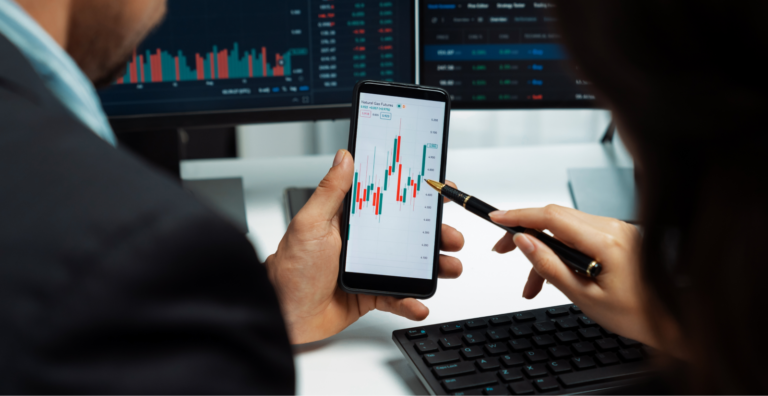Bank Nifty is one of the important indices which comprises the most liquid and large Indian Banking stocks in the investment app. Lagging and leading behavior of Bank Nifty can help us gauge the strength or weakness of the ongoing trend in Nifty. In fact, the Bank Nifty Index positively influences almost all the sectoral indices of NSE in both bull and bear phase market movements. Hence, before making any investments in the equity market, the investing and trading community must look into the behavioral pattern of banking sector stocks as they influence the behavior of other sector stocks too and accordingly make trade investments.
The judgment of index movement depends on fundamental and technical factors.
Fundamental factors:
- Bond Yield Movement: When a countrys macro-economic situation (CPI, GDP, trade balance, and fiscal deficit) deteriorates, bond prices fall and bond yields rise. From stock market investment point of view, rising bond yields erode bank treasury income and vise-versa.
- Quarterly result update of top six banks: (HDFC Bank, ICICI Bank, KOTAK Bank, SBI, Axis Bank and IndusInd Bank): On a quarterly basis, the parameters like Net interest income, core income from operation, Net interest margin, Asset quality improvement, Capital adequacy ratio and CASA ratio should be considered for these banks in order to understand the overall trend of the market .
- Sentiment Analysis: Sentiment analysis plays a pivotal role in understanding the dynamics of the Bank Nifty movement within financial markets. It involves examining various sources such as financial news, social media, and trader indicators to gauge the prevailing market sentiment. Detecting extreme bullish or bearish trends can provide insights into potential reversals or continuations in the Bank Nifty’s trajectory.
- Wondering, ‘How to judge bank nifty movement?’ One crucial aspect of sentiment analysis involves delving into options chain data, specifically open interest and implied volatility. High open interest in call options at a specific strike suggests expectations of the spot price staying below that level. Additionally, the put-call ratio serves as a valuable indicator of market sentiment, with a high PCR indicating more put selling than call selling.
- Monitoring changes in option prices and open interest is essential for identifying shifts in sentiment. For instance, a simultaneous rise in the Bank Nifty future price and open interest signifies bullish sentiment, hinting at potential market optimism. Traders and investors can leverage this information to make informed decisions, aligning their strategies with the prevailing sentiment to navigate the complexities of the Bank Nifty movement effectively
- Machine Learning And Artificial Intelligence: Leveraging ML and AI in Bank Nifty trading involves a strategic process beginning with comprehensive data collection. Historical price data, pertinent economic indicators, and sentiment extracted from news sources form the foundation for informed decision-making. This data serves as the fuel for constructing sophisticated trading algorithms.
- The development phase revolves around engineering algorithms that integrate various technical indicators and diverse data inputs. ML algorithms such as decision trees, random forests, or neural networks can be instrumental to predict bank nifty movement accurately. These algorithms process vast datasets and identify patterns that may not be apparent through traditional analysis methods.
- After constructing the model, rigorous backtesting using historical data becomes imperative. This step assesses the model’s performance under various market conditions, offering insights into its strengths and weaknesses. Subsequent to backtesting, model parameters undergo optimization to enhance accuracy and robustness. Continuous refinement and adaptation are crucial in the dynamic landscape of financial markets, ensuring that the ML and AI-powered trading strategies remain effective in predicting and responding to Bank Nifty’s behavior with agility and precision.
Technical factors: Derivative Indicator
- High Call and Put option OI (Open Interest) of the index: Positional and short term.
- High Call and Put option OI of HDFC Bank, ICICI Bank, KOTAK Bank, SBI and Axis Bank.
- Index Future OI and Price movement on weekly and monthly data: Long Buildup, Short Buildup, and Short Covering.
- Option activity (weekly and monthly): Short build-up or short covering strike with relation to their price and IV movement.
- Cost-of-carry (COC) movement: Premium or discount, high premium means range-bound expectation.
- Index IV percentile: above 90 or below 30.
- PCR (Put-call Ratio) OI trend: Increasing trend indicate bullishness and vice-a-versa.
- VWAP (Volume weighted average price) level: Weekly, monthly and quarterly.
- Options Activity in HDFC Bank, ICICI Bank, KOTAK Bank, SBI and Axis Bank.
- Index Ratio trend: Bank Nifty/Nifty.
- EMA (Exponential moving average) Levels: 10,20,50,100 and 200.
- Trend Reversal date calculation through “Gann degree”.
- Elliott wave for Positional trend only.
- Mean +1, 2 and 3 level with help of Fibonacci Extension: Weekly and monthly. Index HV (Historical volatility) movement.
Remarks:
We give bullish or bearish strategy recommendation with hedge format on the index by screening above factors, that is why our success ratio (87% in the last 1year) of the FNO strategy is high. It is very essential to have discipline and proper knowledge to succeed in trading. The rewards of trading are high but that depends on the decisions. Trading requires a lot of time and attention in order to understand the markets trends, technical indicators and national and international news regarding capital markets

![]() IIFL Customer Care Number
IIFL Customer Care Number ![]() IIFL Capital Services Support WhatsApp Number
IIFL Capital Services Support WhatsApp Number